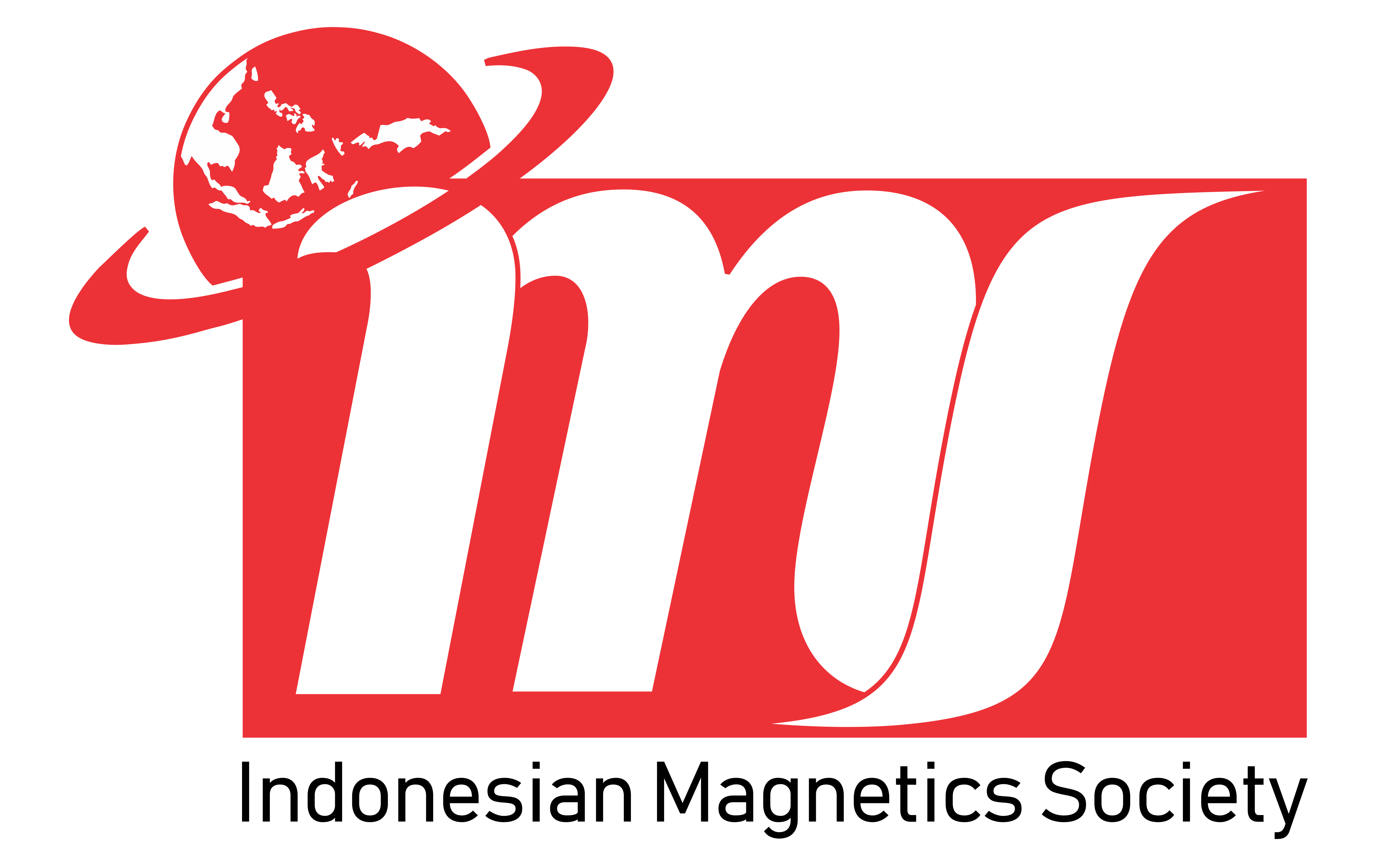The nuclear matter test of variational effective interactions
Abstract
Keywords
Full Text:
PDFReferences
Wong, S. M .(2004). Introductory Nuclear Physics. 2ed. Toronto: Prentice-Hall International, Inc. 317P.
Bohr, A.A. and Mottelson, B. R. (1969). Nuclear Structure, Volume 1: Single Particle Motion. W.A Benjamin Inc. Amsterdam. 471P.
Lovato, A. (2012) Abinitio Calculations on Nucleon- Nucleon Interaction. Doc- toral Thesis. arXiv:nucl-th/1210.0593V1. 188P.
Khoa, D. T., Oertzen, V. W. and Bohlen, H. G. (1994). Double-Folding Model for Heavy-ion Optical Potential: Revised and Applied to Study 12C and 16O Elastic Scattering. Physical Review C. 49(3), 1652 - 1667.
Nakada, H. (2003). Hartree-Fock Approach to Nuclear Matter and Finite Nuclei with M3Y-type Nucleon-Nucleon Interactions. Physical Review C. 68(014316), 42 - 59.
Seif, W. M. (2011). Nuclear Matter Equation of State Using Density-Dependent M3Y Nucleon-Nucleon Interactions. J. Phys. G.: Nucl. Part. Phys. 38(035102), 1- 21.
Xu, J., Chen, L. and Li, B. (2015). Thermal Properties of Asymmetric Nuclear Matter with an Improved Isospin and Momentum-Dependent Interaction. Phys- ical Review C. 91(1), 76 - 93.
Oyamatsu, K. and Iida, K.(2003). Saturation of Nuclear Matter and Radii of Un- stable Nuclei. Progress of Theoretical Physics. 109(4), 631 - 650.
Kakani, S. L. and Kakani, S. (2008). Nuclear and Particle Physics. New Delhi: Viva Books. 965
Mahrun, G. (1996). Nuclear Models. Springer-Verlag. Berlin. 375P.
Garg, U. (2011a). The Asymmetry Term in the Nuclear matter Incompressibility from Measurements on the Giant Monopole Resonance. Acta Physica Polonica B 42, 659 – 666.
Dortmans, P. J., and Amos, K. (1994). Density-Dependent Effective Interactions.
Physical Review C 49(3), 1309 - 1314.
Chappert, F., Girod, M. and Hilaire, S. (2008). Towards a New Gogny Force Pa- rameterization: Impact of the Neutron Matter Equation of State. Physics Letters B. 668 (5), 420 - 424.
Erler, J., Kliipfel, P. and Reinhard, P.G. (2011). Self-Consistent Nuclear Mean- Field Models: Example Skyrme-Hartree-Fock. Journal of Physics G: Nuclear and Particle Physics. 38(033101), 1 - 43.
Anantaraman, N., Toki, H. and Bertsch, G. F.(1983). An Effective Interaction for Inelastic Scattering Derived from the Paris Potential. Nuclear Physics A 398, 269- 278.
Bertsch, G., Borsowicz, J., McManus, H. and Love, W. G. (1977). Interactions for Inelastic Scattering Derived from Realistic Potentials. Nuclear Physics A. 284, 399 - 419.
Fiase J. O., Devan K.R.S. and Hosaka A. (2002). Mass Dependence of M3Y- Type Interactions and the Effects of Tensor Correlations. Physical Review C. 66(014004), 1 - 9.
Ochala, I., Fiase, J. O., Momoh, H. O. and Okeme, I. C. (2020). The Mass- Dependent Effective Interactions as Applied to Nuclear Matter. Nigerian Journal of Physics. 29(1): 209 - 219.
Fiase J. O., Nkoma J. S. and Sharma L. K. (2002). Evidence of Tensor Correla- tions in the Nuclear Many-Body System Using a Modern NN Potential. Few-Body Systems Suppl. 15, 253 - 258.
Fiase J. O. and Idiodi, J. O. A. (2010). Mass Dependence of the Landau-Migdal Parameter Estimated with Effective Interactions. Journal of the Nigerian Associ- ation of Mathematical Physics. 10, 6 -10
Stoks, V. G. J., Klomp, R. A. M., Terheggen, C. P. F. and De Swart, J. J. (1994). Nijmegen Soft-Core Potential Including Two-Meson Exchange. Physical Review C 49(6), 2950 - 2962.
De Swart, J. J., Klomp, R. A. M., Rentmeester, M. C. M. and Rijken, T. A. (1995).The Nijmegen Potentials. Few Body Syst.Suppl. 8, 438 - 447.
Reid, R. V. (1968). Local Phenomenological nucleon-nucleon Potentials Ann.Phys. (N. Y.) 50(3), 411-448.
Fiase, J. O., Hamoudi, A., Irvine, J. M. and Yazici, F. (1988). Effective Interac- tions for sd-Shell Model Calculations. J. Phys. G: Nucl. Phys. 14(27), 27 - 36.
Khoa, D. T. and Oertzen, V.W. (1993). A Nuclear Matter Study Using the Density- Dependent M3Y Interaction. Physics Letters B. 304, 8 - 16.
Khoa, D. T. and Oertzen, V. W. (1995). Refractive Alpha-Nucleus Scattering; A Probe for the Incompressibility of Cold Nuclear Matter. Physics Letters B. 342, 6- 12.
Khoa, D. T., Oertzen V. W. and Oglobin. (1996). Study of the Equation of State for Asymmetric Nuclear Matter and Interaction Potential between Neutron-Rich Nuclei Using the Density-Dependent M3Y Interaction. Nuclear Physics A. 602, 98 - 132.
Khoa, D. T., Oertzen, V. W. and Bohlen, H. G. (1994). Double-Folding Model for Heavy-ion Optical Potential: Revised and Applied to Study 12C and 16O Elastic Scattering. Physical Review C. 49(3), 1652 - 1667.
Khoa, D.T., Satchler, G.R. and Oertzen, W. V. (1997). Nuclear Incompressibil- ity and Density Dependent NN Interactions in the Folding Model for Nucleus Potentials. Physical Review C. 56(2), 954 - 969.
Basu, D. N., Chowdhury, P. R. and Samanta, C. (2006). Equation of State for Isospin Asymmetric Nuclear Matter Using Lane Potential. Acta Physica Polonica B. 37(10), 2869 - 2887
Nakada, H. (2010). Modified Parameter-Sets of M3Y-type Semi-Realistic Nucleon- Nucleon Interactions for Nuclear Structure Studies Physical Review C. 81(027301), 42 – 59
Ochala, I., Fiase, J. O., Gbaorun, F. and Bamikole, J. A. (2021). A Study of Asymmetric Nuclear Matter with the B3Y-Fetal Effective Interaction. Interna- tional Research Journal of Pure and Applied Physics. 8(2): 10 - 35.
Ochala, I. and Fiase, J. O. (2018). Symmetric Nuclear Matter Calculations - A Variational Approach. Physical Review C. 98(064001): 1-8. DOI:10.1103/PhysRevC.98.064001.
Ochala, I. (2023). Probing Nuclear Equation of State with the CDM3Y Version of B3Y-Fetal Effective Interaction. International Journal of Physics Research and Applications. 6: 98 - 114. DOI:10.29328/journal.ijpra.1001057
Mansour, H. M. M., Ramadan, K. A. and Hammad, M. (2004). Properties of Nuclear and Neutron Matter Using D1 Gogny Force. Ukr. J. phys. 49(8), 756 - 762.
Than, H.S.(2009). Microscopic Description of Nuclear Structure and Nuclear Re- actions. Unpublished PhD Thesis. Institute for Nuclear Science and Technology, Hanoi. 181P.
Chen, L., Cai, B., Shen, C., Ko, M.C., Xu, J. and Li, B. (2009). Incompressibility of Asymmetric Nuclear Matter. Physics Letters. 217(4), PP 1 - 11
Basu, D. N. (2004). Nuclear Incompressibility Using the Density Dependent M3Y Effective Interaction. J. Phys.G:Nucl. Part. Phys.. 30, 7 - 11
Ochala, I., Fiase, J. O., Obaje, V. O. and Sule, V. I. 2021. The Mass-Dependent Effective Interactions Applied to Nuclear Reactions. Australian Journal of Basic and Applied Sciences. 15 (10): pages 1-12. DOI: 10.22587/ajbas.2021.15.10.1.
Ochala, I., F. Gbaorun, Bamikole, J. A. and Fiase, J. O. (2019). A microscopic Study of Nuclear Symmetry Energy with an Effective Interaction Derived from Variational Calculations. International Research Journal of Pure and Applied Physics. 6(2): 22 - 33.
Ochala, I. (2021). optical Model Analyses of Elastic Scattering of 16O +12 C . International Journal of Applied Mathematics and Theoretical Physics. 7(1): 1 - 9. DOI: 10.11648/j.ijpra.20210701.
Ochala, I., and Fiase, J. O. (2021). B3Y-Fetal Effective Interaction in the Fold- ing Analysis of Elastic Scattering of 16O +16 O. Nuclear Science and Techniques 32(81): 1 - 14. DOI: 10.1007/s41365-021-00920-z.
Ochala, I., Terver, D. and Fiase, J. O. (2020). A Study of 12C +12 C Nuclear Reaction using a New M3Y-Type Effective Interaction. Inter- national Journal of Physics Research and Applications. 3: 133 - 142. DOI:10.29328/journal.ijpra.1001031
Khoa, N. H. D., Tan, N. T. and Khoa, D. T. (2022). Spin Symmetry Energy and Equation of State of spin-Polarized Neutron Star Matter. Physical Review C. 105(065802), 1 - 12.
Tan, N. T, Khoa, D. T. and Loan, D. T.(2021). Equation of State of Asymmetric Nuclear Matter and the Tidal Deformability of Neutron Star. Eur. Phys. J. A 57, 153.
Chien, L. H., Khoa, D. T., Cuong, D. C. and Phuc, N. H. (2018). Con- sistent Mean-Field Description of the 12C+12C Optical Potential at Low Energies and the Astrophysical S-Factor. Physical Review C. 98, 064001. doi:10.1103/PhysRevC.98.064001.
Singh, B., Bhuyan, M., Patra, S. K. and Gupta, K. J. (2012). Optical Potential Obtained from Relativistic Mean-Field Theory-Based Microscopic Nucleon-Nucleon Interaction Applied to Cluster Radioactive Decays. J. Phys. G: Nucl.Part. Phys. 39, 1 - 10.
Mondal, S. H. and Khan, M. A. (2022). Study of Fusion Cross-section and As- trophysical S-factor for p +15 N and α +12 C at Sub-barrier Energy. International Journal of Modern Physics E. 31(05), 2250045.
Siwek-Wilczyn´ska, K. and Wilczyn´ski, J. (2004). Empirical Nucleus-Nucleus Potential Deduced from Fusion Excitation Functions. Physical Review C. 69(2), 024611.
Li, J. X. and Zhang, H. F. (2022). Predictions for the synthesis of the Z= 120 superheavy element. Physical Review C. 106(3), 03461
Majekodunmi, J. T., Alsultan, T. Y.T., Anwar, K., Nujud, B. M., Jain, D., Kumar, R., Bhuyan, M. (2023). The α-particle Clustering and Half-Lives of the Newly Discovered 207,208Th Decay Chains Within Relativistic Hartree-Bogoliubov Ap proach. Nuclear Physics A 1034, 1 - 15.
Majekodunmi, J. T., Bhuyan, M., Jain, D., Anwar, K., Abdullah, N. and Kumar, R. ](2022). Cluster Decay Half-Lives of Ba 112–122 Isotopes from the Ground ] and Intrinsic Excited State Using the Relativistic Mean-Field Formalism the Preformed-Cluster-Decay Model. Physical Review C. 105(4),
Refbacks
- There are currently no refbacks.







